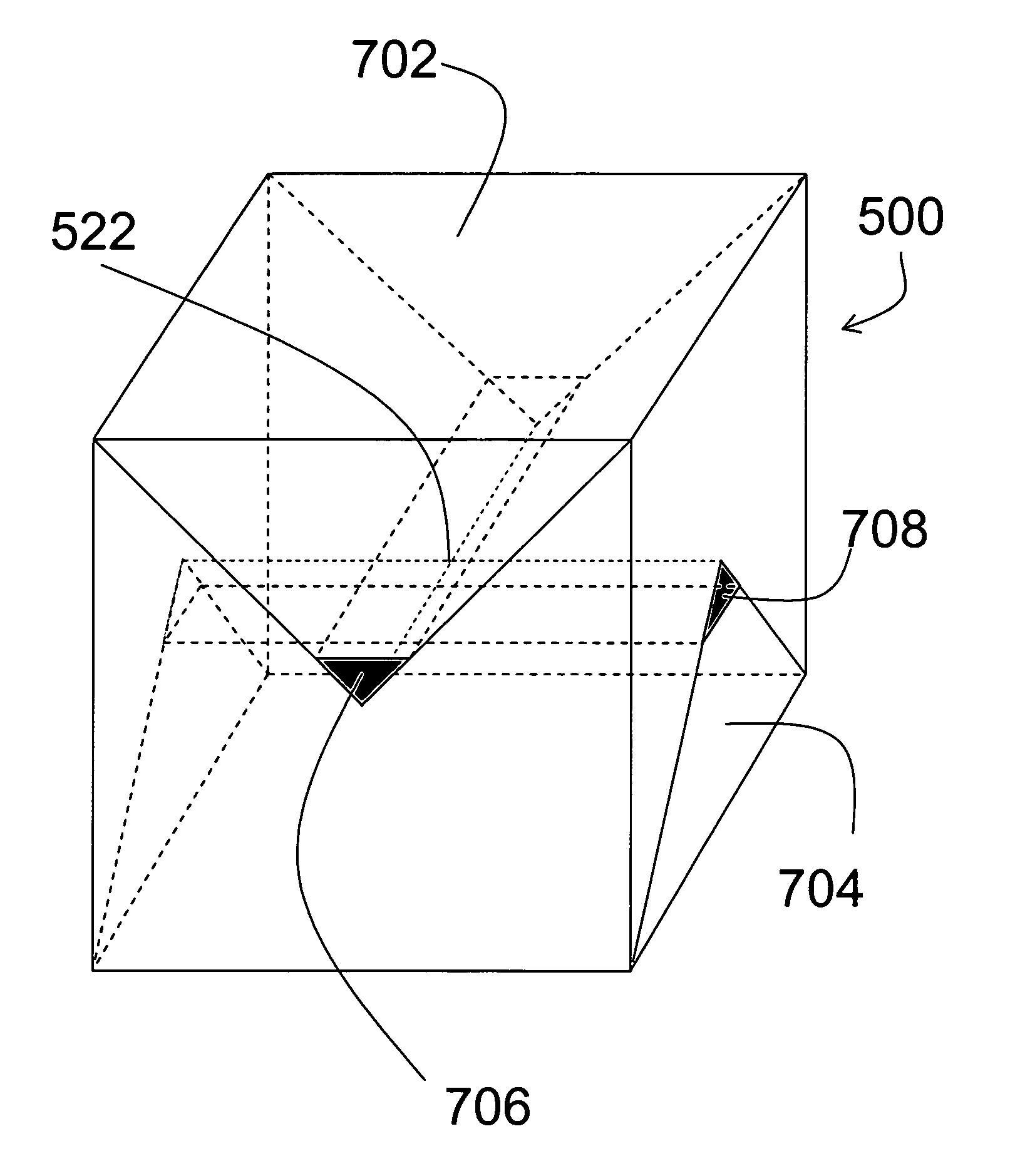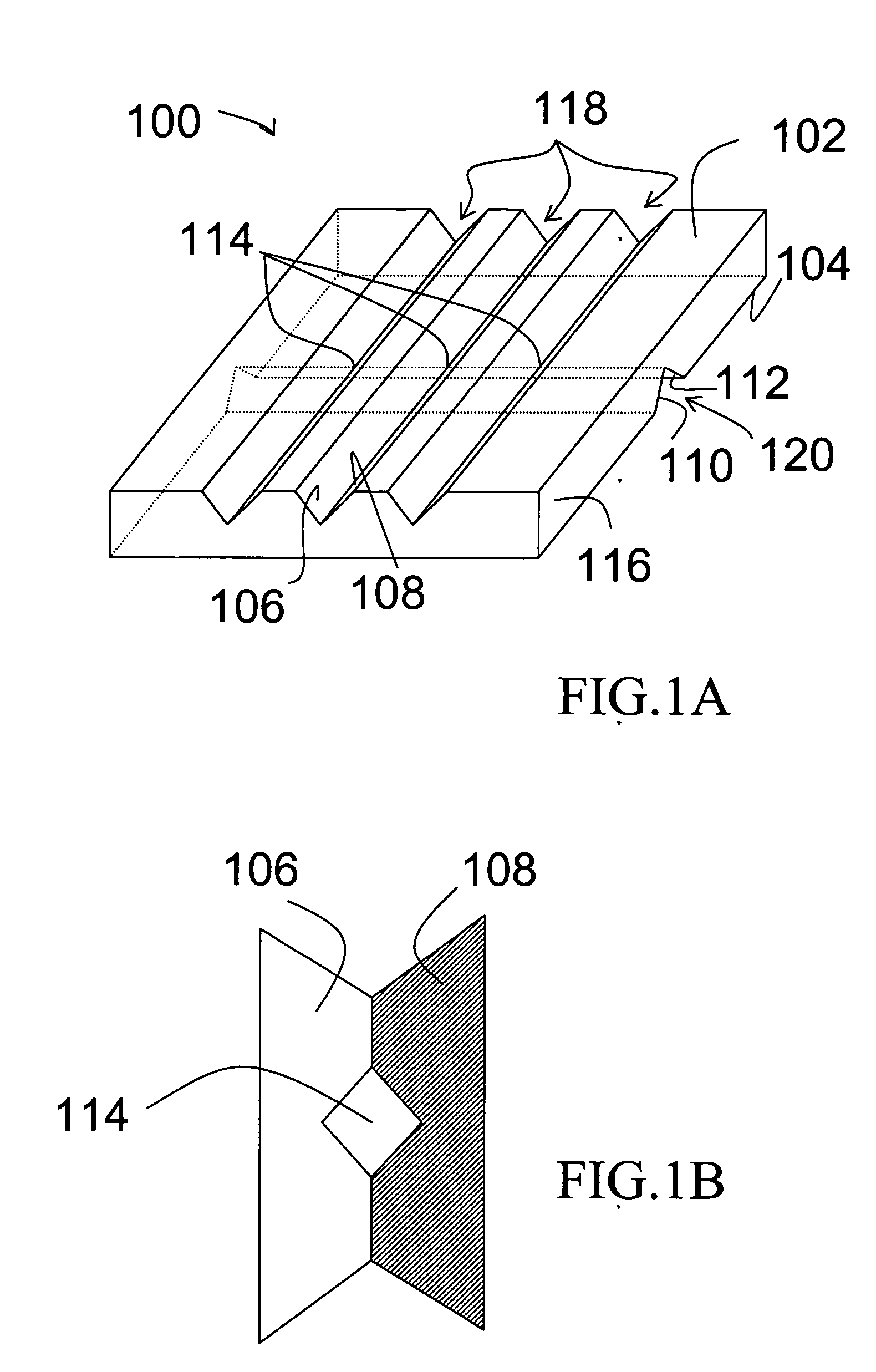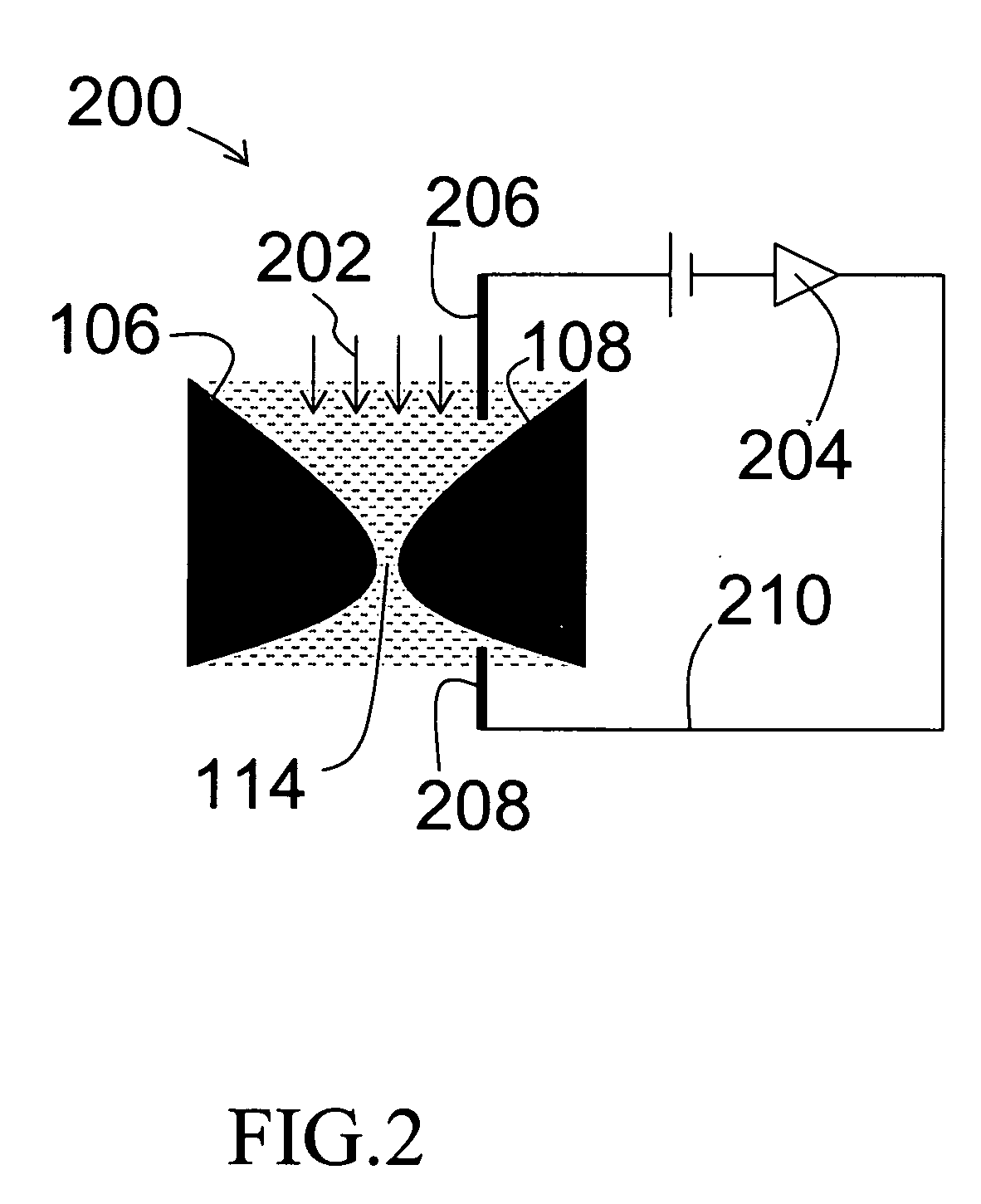Addressable nanopores and micropores including methods for making and using same
a nanopore and micropore technology, applied in the field of nanopores and micropores, can solve the problems of long nanopores that are not suitable for many applications, can not be produced by many methods, and have a long length of a micrometer or more, and achieve the effect of reducing the diameter of micropores
- Summary
- Abstract
- Description
- Claims
- Application Information
AI Technical Summary
Benefits of technology
Problems solved by technology
Method used
Image
Examples
Embodiment Construction
[0036] Referring now to the drawings, a preferred embodiment of the present invention is illustrated in FIG. 1A and FIG. 1B. In FIG. 1A, there is shown a perspective view of device 100 including an array of electrically-addressable nanopores 114, more particularly a linear array of nanopores. The device 100 includes an insulating member 116 having a top surface 102 and a bottom surface 104. A plurality of grooves 118 are formed in the top surface using any of a number of techniques known to those skilled in the art that are appropriate for the material comprising the insulating member. The V-grooves 118 in the top surface 102 are formed in the insulating member 116 so as to generally extend downwardly towards the bottom surface 104 a predetermined distance from the top surface 102. Correspondingly, the V-groove 120 in the bottom surface 104 is formed in the insulating member 116 so as to generally extend upwardly towards the top surface 102 a predetermined distance from the bottom s...
PUM
| Property | Measurement | Unit |
|---|---|---|
| Time | aaaaa | aaaaa |
| Width | aaaaa | aaaaa |
| Width | aaaaa | aaaaa |
Abstract
Description
Claims
Application Information
 Login to View More
Login to View More - R&D
- Intellectual Property
- Life Sciences
- Materials
- Tech Scout
- Unparalleled Data Quality
- Higher Quality Content
- 60% Fewer Hallucinations
Browse by: Latest US Patents, China's latest patents, Technical Efficacy Thesaurus, Application Domain, Technology Topic, Popular Technical Reports.
© 2025 PatSnap. All rights reserved.Legal|Privacy policy|Modern Slavery Act Transparency Statement|Sitemap|About US| Contact US: help@patsnap.com



